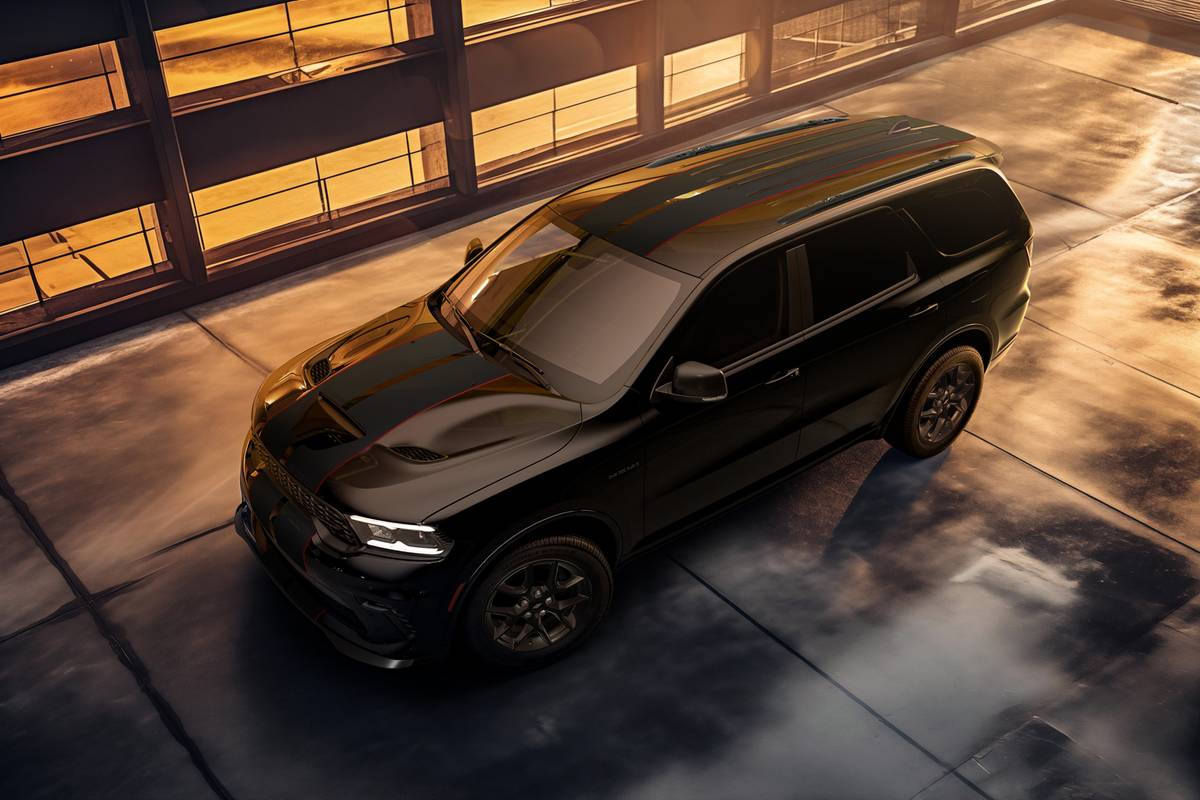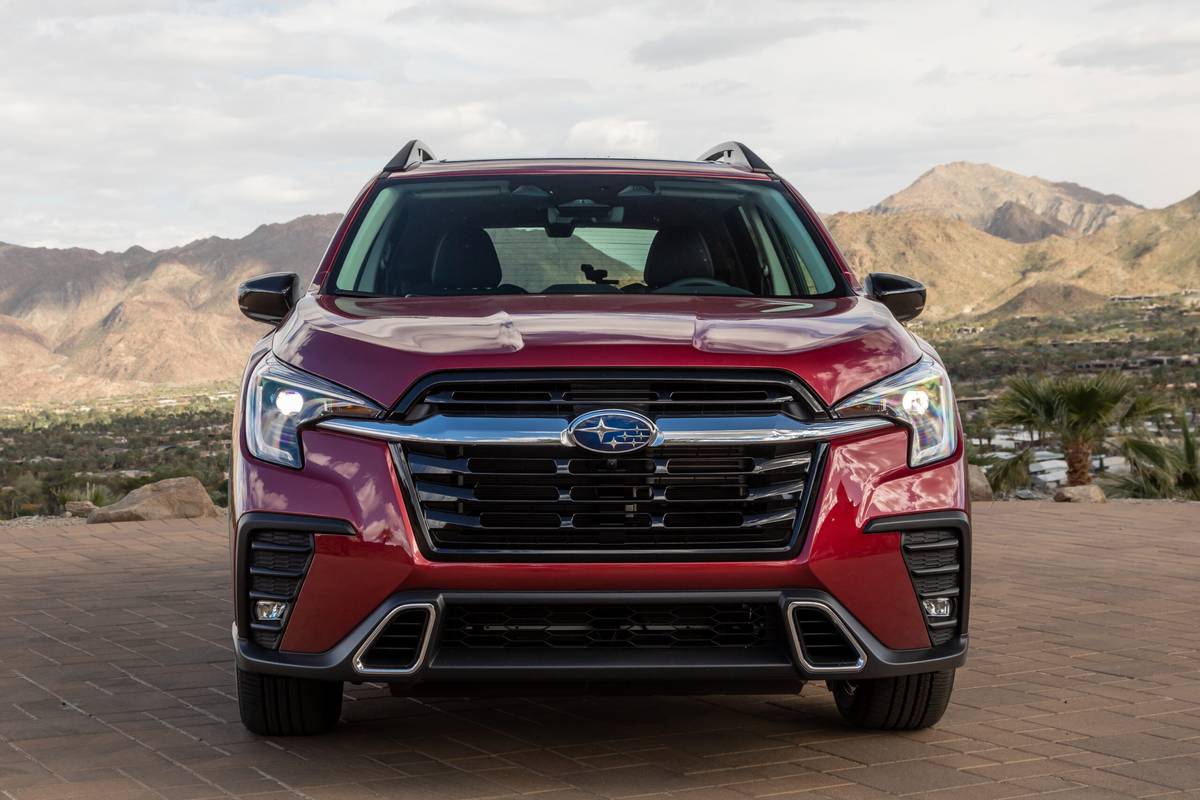chicagotribune.com's view
The 1999 Saab 9-3 HOT.
That’s HOT as in High Output Turbo.
Press the pedal and the normally aspirated 2-liter, 185-horsepower 4-cylinder engine under the hood of this Swedish sedan breathes fire and develops 200 h.p.
However, we have found that it’s best to breathe fire in the spring, summer or fall when testing a car in the Snow Belt.
Along about January, HOT doesn’t stand for High Output Turbo but rather Hold On Tight.
The Saab 9-3 was designed to make sports sedan enthusiasts shed tears of joy from the performance available from this otherwise staid machine.
With about 4 inches of snow on the pavement and 21.6 inches alongside the road, the 9-3 is a different animal.
Make that one foot forward, one foot sideways.
The problem, other than the torque that makes stability unruly, is the treads on which the 9-3 sits. P205/50R16 Michelin Pilot radials come as standard–steel belts that best serve on dry roads where they are designed to grab tight to keep the vehicle from wandering, especially in corner or curve.
What’s that you say? Saab is a front-wheel-drive machine so it should be able to go where it wants when it wants. FWD is not a cure-all for winter driving, especially not with high-performance speed-rated tires, which are akin to trying to conquer a frozen pond with Rollerblades.
On snow-packed roads, the performance tires make the 9-3 skittish. We found ourselves testing the anti-lock brakes on numerous occasions. By the way, the ABS in this car is very good. Nice straight stops without wavering. There’s noticeable pedal pulsing and lots of racket filtering through the firewall as the ABS keeps you in directional control while stopping. Small price to pay for stability.
The Michelin tires that came on the test car are speed-rated at 179 m.p.h. plus. Michelin says it has just come out with an all-season tire called Arctic Alpine designed to keep the 9-3 from developing the jitters when traveling through snow, but the tire is rated at only 129 m.p.h.
Darn. Able to work out only at 129 m.p.h. with the 9-3 rather than 179 m.p.h. after a 21.6-inch snowfall? Doesn’t seem fair, does it? Sensible, maybe, but not fair.
Also, how do you say traction control in Swedish? Oops. Forgot. GM now owns 50 percent of Saab so we don’t need a translator. So, please, Joel Manby, head of Saab, stick traction control in the 9-3 if you want to sell the same number here in January as you do in July. Can’t get traction control in the 9-3 now.
The 9-3 HOT isn’t made for everyone because it comes only with a 5-speed manual and because you still have to slip the ignition key in the slot in the center console along the floor rather than along the dash where most civilized societies house it.
As for that key, it comes attached to a long slender black rubber fob. There are three rectangular symbols on the fob to push, one to lock the doors, one to unlock the doors, one to unlock the hatch lid. The symbols, however, are the same black rubber as the fob so it’s difficult to find them before you can ever hope to push them.
The 9-3 HOT does have some niceties, such as side-impact air bags as well as a unique active head restraint system that catches and clutches your noggin in an impact to help prevent whiplash. If you’ve ever experienced the pain and agony of whiplash, you’ll walk down to the nearest Saab store, open the door on a 9-3 HOT and give the headrest a great big hug.
Of course, if the door is locked and you have to use the fob to get in the car, give the headrest a fond wave through the window.
Also, the cargo hold is massive. Skiers can take advantage of a pass-through in the rear seat back. If you have lots of packages, the rear seat bottoms fold over and the backs fold down to increase cargo capacity. While the back seat accommodates packages well, it would be nice if it could add a few more inches of leg and foot room to accommodate passenge rs comfortably as well.
The 9-3 HOT starts at $31,700 and is a most complete machine. There aren’t many options to add unless you opt for front and rear heated seats for $500 and all-season radials so you don’t have to pack your Saab and your beret away for the winter.
Standard equipment includes power locks and windows, headlamp washers/wipers, front and rear fog lights, rear-window washer/wiper, power glass sunroof, automatic climate control, eight-way power seats, leather seats and steering-wheel cover, telescoping steering wheel, front and rear floor mats, cruise control, heat absorbent tinted glass, coin/cupholders and AM/FM stereo with cassette.
Initially, only the 9-3 will offer the 200-h.p., turbocharged 4. The larger 9-5 sedan will offer it starting this fall.
At the Detroit Auto Show, Saab unveiled a new 9-5 wagon due this spring, its first station wagon in 25 years.
A novel item is the rear load floor that slides out up to 20 inches to ease loading/unloading. The extended floor can support 440 pounds of cargo. Two rearward facing red lights in the cargo area are designed to warn other motorists that the liftgate is open when carrying goods.
And, since Saab says 60 percent of its owners have and travel with pets, cargo rails in back are designed to hold the leash.
>> 1999 Saab 9-3 HOT
© 1999 Chicago Tribune Wheelbase: 102.6 inches Length: 182.3 inches Engine: 2-liter, 200-h.p., turbocharged 4-cylinder Transmission: 5-speed manual Fuel economy: 19 m.p.g. city/27 m.p.g. highway Base price: $31,700 Price as tested: $32,500. Includes $500 for heated front and rear seats. Add $575 for freight. Pluses: Very potent turbocharged engine. Suspension very smooth when you find clean stretches of pavement. Massive trunk and rear seats fold over and down for added storage. Side-impact air bags and active head restraint to cushion the noggin in a collision to prevent whiplash are standard, as is ABS. Minuses: Not a Snow Belt car with the standard, speed-rated performance radial tires. Comes with only 5-speed manual. Key fob lock/unlock buttons difficult to see–and use. >>
Latest news



